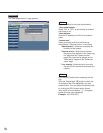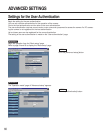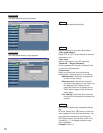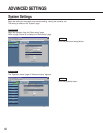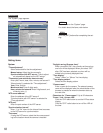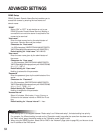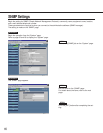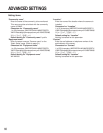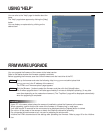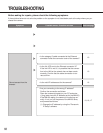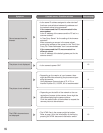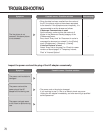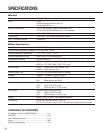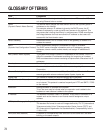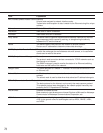
72
GLOSSARY OF TERMS
Term Explanation
Cross Cable The Ethernet cable designed to directly connect one PC to another PC with-
out using Ethernet hubs or routers.
DDNS The service which assigns the fixed domain name to the dynamic global IP
(Dynamic Domain Name Service) addresses on the Internet.
For example, when an IP address is given by the DHCP server, the IP
address is replaced by a new one with every access on the network. This
may cause user’s having the difficulty in remote access. DDNS reconfigures
the linkage between the host name and the IP address so that users can
access with the fixed domain name.
Default Gateway Hardware such as a PC or a router, which is the gateway, to access a PC
outside the network.
DHCP DHCP automatically assigns IP addresses to clients on a network.
(
Dynamic Host Configuration Protocol)
The DHCP server manages information such as IP addresses, gateway
addresses, domain names, subnet masks, and assigns IP addresses to
clients.
DNS (Domain Name System) This system links domain names to IP addresses on the Internet. Since it is
difficult to remember IP addresses consisting of a long string of numbers,
DNS translates domain names consisting of alphanumeric characters into IP
addresses.
Download Transferring data from a remote computer to the local computer.
Ethernet A communication medium for LAN, which was developed by Xerox
Corporation.
Ethernet Switching Hub A concentrator device used in a 10Base-T or 100Base-TX network. There are
several types with various numbers of ports: 8 ports, 4 ports, etc.
Frame Rate The number of frames per second displayed during playback.
FTP (File Transfer Protocol) The protocol used to transfer files over TCP/ IP networks such as the Internet
or an intranet. This protocol is used as frequently as HTTP and SMTP / POP3
on the Internet.
Installation Adding hardware or software to the system.
This is the term used to indicate when an expansion card is added to the
hardware or new software is added to the system.
IP Address The address information used in IP protocol. Every piece of hardware on a
network such as the Internet or an intranet must be assigned a unique
address.
JPEG (Joint Photographic Experts Group)
The standard file format for color still images defined by ITU-TS (International
Telecommunication Union-Telecommunication Sector: former CCITT) and
ISO (International Organization for Standardization). Compressibility ratio is
1/10 to 1/100.
LAN (Local Area Network) A network of a comparatively small area such as the same floor, the same
building, or the same campus.



